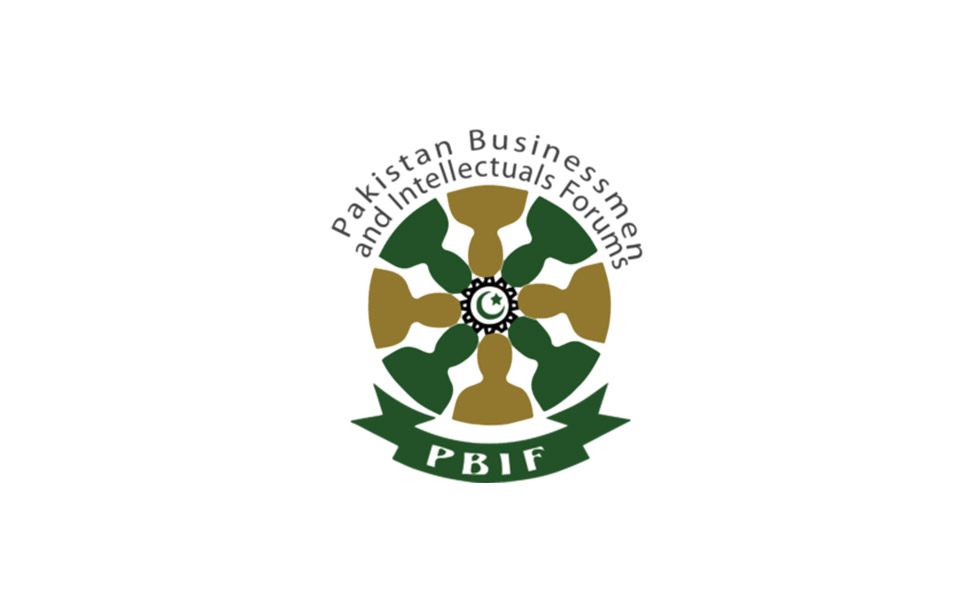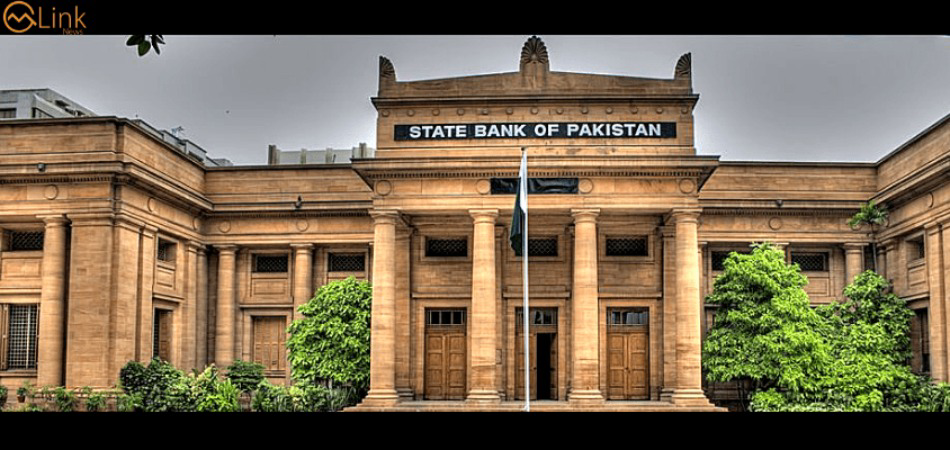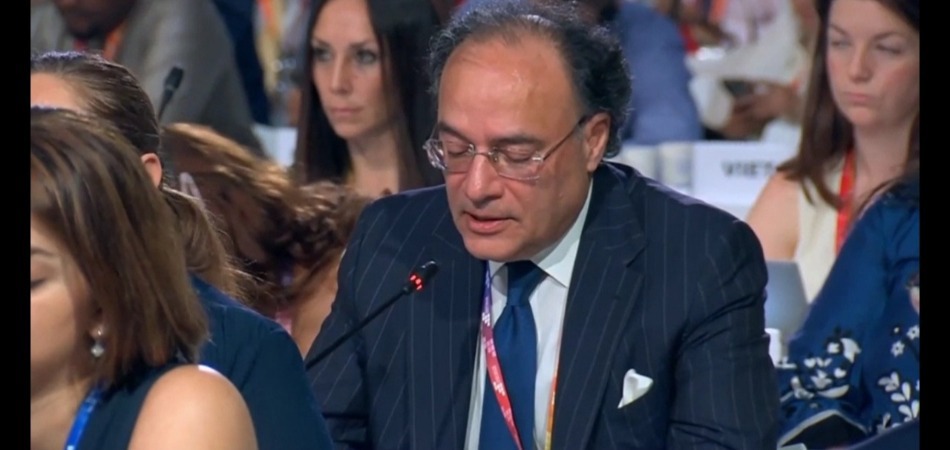SBP keeps policy rate unchanged at 7 percent

By MG News | July 27, 2021 at 05:42 PM GMT+05:00
July 27, 2021( MLN): The Monetary Policy Committee (MPC) of the State Bank of Pakistan (SBP) in its meeting held on July 27, 2021 in Karachi, has decided to maintain the Policy Rate at 7 percent.
The outcome of the meeting was in line with market expectations, wherein participants predicted that the Central Bank would maintain the status quo.
Since its last meeting in May, the MPC was encouraged by the continued domestic recovery and improved inflation outlook following the recent decline in food prices and core inflation. In addition, consumer and business confidence have risen to multi-year highs and inflation expectations have fallen. As a result of these positive developments, growth is projected to rise from 3.9 percent in FY21 to 4 - 5 percent this year, and average inflation to moderate to 7 - 9 percent this year from its recent higher out-turns. Imports are expected to grow on the back of the domestic recovery and rebound in global commodity prices, albeit more moderately than in FY21.
The MPC noted that the market-based flexible exchange rate system, resilience in remittances, an improving outlook for exports, and appropriate macroeconomic policy settings should help contain the current account deficit in a sustainable range of 2 - 3 percent of GDP in FY22. Notwithstanding this moderate current account deficit, the country’s foreign exchange reserves position is expected to continue to improve this year due to adequate availability of external financing. Against this backdrop, the MPC felt that the uncertainty created by the on-going fourth Covid wave in Pakistan and the global spread of new variants warrants a continued emphasis on supporting the recovery through accommodative monetary policy.
Looking ahead, in the absence of unforeseen circumstances, the MPC expects monetary policy to remain accommodative in the near term, and any adjustments in the policy rate to be measured and gradual to achieve mildly positive real interest rates over time. If signs emerge of demand-led pressures on inflation or of vulnerabilities in the current account, the MPC noted that it would be prudent for monetary policy to begin to normalize through a gradual reduction in the degree of accommodation. This would help ensure that inflation does not become entrenched at a high level and financial conditions remain orderly, thereby supporting sustainable growth.
In reaching its decision, the MPC considered key trends and prospects in the real, external and fiscal sectors, and the resulting outlook for monetary conditions and inflation.
Real sector
Pakistan’s economic recovery continues, driven by industry—particularly large-scale manufacturing and construction—and services. Several high-frequency indicators show strong year-on-year growth including fast moving consumer goods (FMCG) sales, steel production, cement sales, POL sales, and electricity generation. The recent month-on-month deceleration witnessed in some indicators is mainly seasonal, and in the case of automobile sales was compounded by delayed bookings in anticipation of supportive measures in the FY22 budget. Notwithstanding the upswing in activity, capacity utilization in manufacturing is still below its peak levels during FY16-18 and services sector activity has not yet fully returned to normal due to intermittent mobility restrictions.
In FY22, growth is expected to pick up further, supported by measures announced in the budget, accommodative monetary conditions, and disbursements under the SBP’s TERF facility for investment and other refinance facilities. Key budgetary measures include increased development spending and reduced regulatory duties, custom duties, FED and sales tax on the import of raw materials and capital goods. These measures will directly benefit construction and allied industries, as well as export-oriented industries. Agricultural growth is also expected to contribute favorably despite reported water shortages at the start of the sowing period of Kharif crops. The key downside risk to growth stems from the resurgence of Covid cases associated with new strains of the virus both globally and domestically, amid still-low vaccination rates.
External sector
After recording surpluses in the initial months, the current account deficit widened in the second half of FY21, reflecting the pick-up in domestic activity as well as seasonality in import payments, higher global commodity prices, and vaccine imports. In addition, imports of capital goods rose, reflecting the improvement in the investment outlook of the economy. Largely in line with other emerging market currencies, the PKR has depreciated by around 4 percent since the last MPC meeting, partly as expectations of normalization of monetary policy in the United States have been brought forward.
For FY21 as a whole, the MPC noted that Pakistan’s external position was at its strongest in several years. In line with SBP projections in March 2021, the current account deficit fell to only 0.6 percent of GDP. This is the lowest current account deficit in 10 years, supported by all-time high exports and remittances. SBP’s FX reserves rose by $5.2 billion during FY21 to end at over $17 billion or around 3 months of imports, a 4½ year high. Moreover, SBP’s net external reserve buffers (gross reserves less forward liabilities) have risen by $14.1 billion since the beginning of FY20.
The MPC noted that there were good reasons to expect that, unlike several previous growth upturns in Pakistan, the current economic recovery would be accompanied by external stability. Given expected resilience in remittances and an improving outlook for exports, the current account deficit is expected to converge toward a sustainable range of 2 - 3 percent of GDP in FY22. This is much lower than in FY17 and FY18, when the current account deficit increased to around 4 and 6 percent of GDP, respectively, and FX reserves fell by $2 billion and $6.4 billion, respectively. Moreover, imports this year are expected to be more skewed toward machinery rather than consumption compared to FY17, and machinery imports are projected to be better distributed across sectors than in FY18, when power and telecommunications dominated.
With the contained current account deficit and healthy commercial, official, portfolio and FDI inflows, Pakistan’s external financing needs of around $20 billion are expected to be more than fully met in FY22. As a result, foreign exchange reserves are projected to rise further. Since September 2020, the SBP’s Roshan Digital Account initiative for Overseas Pakistanis has generated new financial inflows of $1.8 billion. In July, Pakistan successfully raised an additional $1 billion through a tap issuance of its Eurobond that fetched $2.5 billion in March. In August, Pakistan’s reserve buffers are expected to rise by another $2.8 billion through the IMF’s planned new global SDR allocation. In the event of an unforeseen shock, for instance higher-than-expected oil prices or capital flight from emerging markets due to a tightening of financial conditions in advanced economies, the MPC noted that the market-based flexible exchange rate and improved outlook for domestic investment would help keep the balance of payments position sustainable. In addition, the MPC noted that if balance of payments pressures were to emerge, some normalization of monetary policy may also be needed, especially if demand-side pressures are at play.
Fiscal sector
The FY22 budget is expected to be broadly inflation-neutral as most tax rates have been left unchanged. The government expects the budget deficit to decline from 7.1 percent of GDP last year to 6.3 percent in FY22, on the back of strong growth in both tax (24.6 percent (y/y)) and non-tax revenue (24.7 percent), mainly from income and sales tax as well as the petroleum development levy (PDL). This higher revenue is expected to offset significant growth in both development (71 percent for federal and provincial governments) and non-interest current expenditure (12.8 percent, mainly in the form of subsidies and grants). Meanwhile, the government projects public debt to decline further from 87.6 percent of GDP in FY20 and 83.1 percent in FY21 to 81.8 percent in FY22. The MPC noted that it would be important to carefully monitor how fiscal out-turns evolve through the year, and their resulting implications for the growth and inflation outlook.
Monetary and inflation outlook
The MPC noted that financial conditions remain appropriately accommodative, with market yields and benchmark rates broadly unchanged since the last MPC meeting. Private sector credit continues to recover primarily due to the low interest rate environment and SBP’s support measures during Covid. In FY22, private sector credit is expected to grow broadly in line with nominal GDP and SBP stress-tests indicate that the banking sector should remain stable even under adverse scenarios, with system-wide NPLs contained and capital adequacy well above the domestic regulatory benchmark.
Inflation fell from 11.1 percent (y/y) in April to 9.7 percent in June. For the first time since January, food prices fell on a month-on-month basis in June, on the back of the government’s administrative measures and imports of wheat and sugar. Despite the rise in global oil prices, downward adjustments in the PDL have helped limit domestic pass-through. Moreover, core inflation also fell over the last two months in both urban and rural areas, confirming the view that the energy and food-driven inflation highlighted in recent monetary policy statements has not seeped into general prices and that inflation expectations are well-anchored. Average inflation in FY21 was 8.9 percent, in line with the SBP’s forecast range announced in May 2020. This is the third consecutive year that inflation has fallen within or marginally below the projected range issued by the SBP around the beginning of the year, highlighting strong forecasting performance. In addition, this outcome underscores the key role that the SBP forecast range is increasingly playing in anchoring inflation expectations, thus allowing monetary policy to credibly look through temporary inflationary pressures.
The recent decline in inflation is consistent with the MPC’s view that recent price pressures are largely supply-driven and transient. Headline inflation should begin to dissipate more visibly in the second half of the year when the February electricity tariff increase drops out of the base, converging to the 5 - 7 percent target range over the medium term. The key risk that could lower inflation is a resurgence in the pandemic domestically and globally. Conversely, risks that could raise inflation include higher-than-expected global commodity prices, especially if these are coupled with upward adjustments in the PDL or domestic energy tariffs, as well as fiscal slippages that lead to stronger demand-side pressures through the year. The MPC will continue to carefully monitor developments affecting medium-term prospects for inflation, financial stability and growth and will be prepared to respond appropriately, as and when required.
Copyright Mettis Link News
Related News
| Name | Price/Vol | %Chg/NChg |
|---|---|---|
| KSE100 | 130,344.03 345.79M |
1.67% 2144.61 |
| ALLSHR | 81,023.99 1,021.87M |
1.55% 1236.37 |
| KSE30 | 39,908.26 141.62M |
2.05% 803.27 |
| KMI30 | 189,535.00 150.29M |
1.40% 2619.39 |
| KMIALLSHR | 54,783.66 508.76M |
1.07% 581.78 |
| BKTi | 34,940.73 55.86M |
4.37% 1464.05 |
| OGTi | 28,296.06 16.02M |
1.19% 333.47 |
| Symbol | Bid/Ask | High/Low |
|---|
| Name | Last | High/Low | Chg/%Chg |
|---|---|---|---|
| BITCOIN FUTURES | 109,485.00 | 110,105.00 109,405.00 |
-800.00 -0.73% |
| BRENT CRUDE | 68.50 | 69.00 68.48 |
-0.61 -0.88% |
| RICHARDS BAY COAL MONTHLY | 97.50 | 0.00 0.00 |
0.75 0.78% |
| ROTTERDAM COAL MONTHLY | 109.20 | 110.00 108.25 |
1.70 1.58% |
| USD RBD PALM OLEIN | 998.50 | 998.50 998.50 |
0.00 0.00% |
| CRUDE OIL - WTI | 66.86 | 67.50 66.83 |
-0.59 -0.87% |
| SUGAR #11 WORLD | 15.56 | 15.97 15.44 |
-0.14 -0.89% |
Chart of the Day
Latest News
Top 5 things to watch in this week
Pakistan Stock Movers
| Name | Last | Chg/%Chg |
|---|
| Name | Last | Chg/%Chg |
|---|


.jpg)

 Trade Balance
Trade Balance
 CPI
CPI